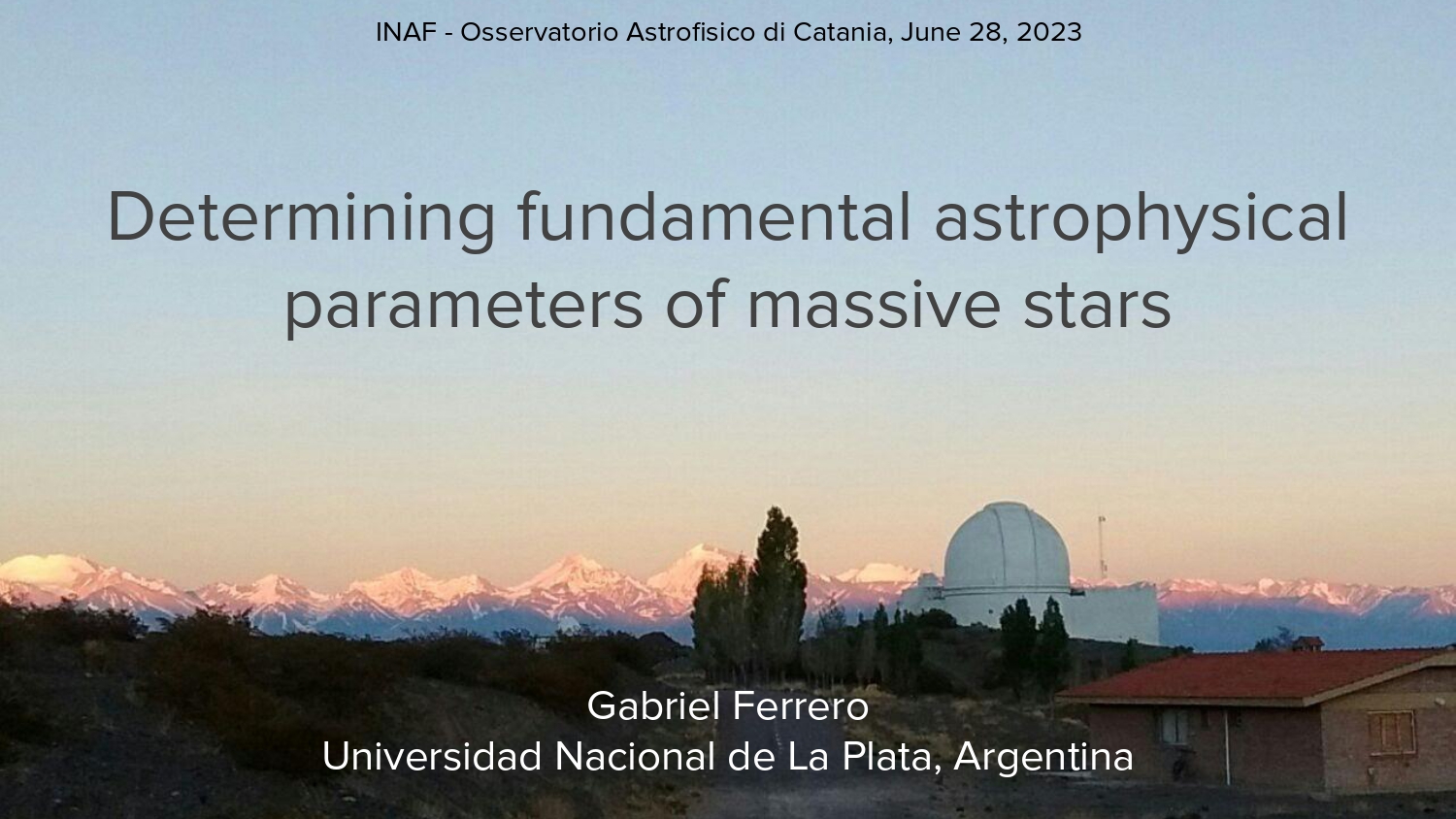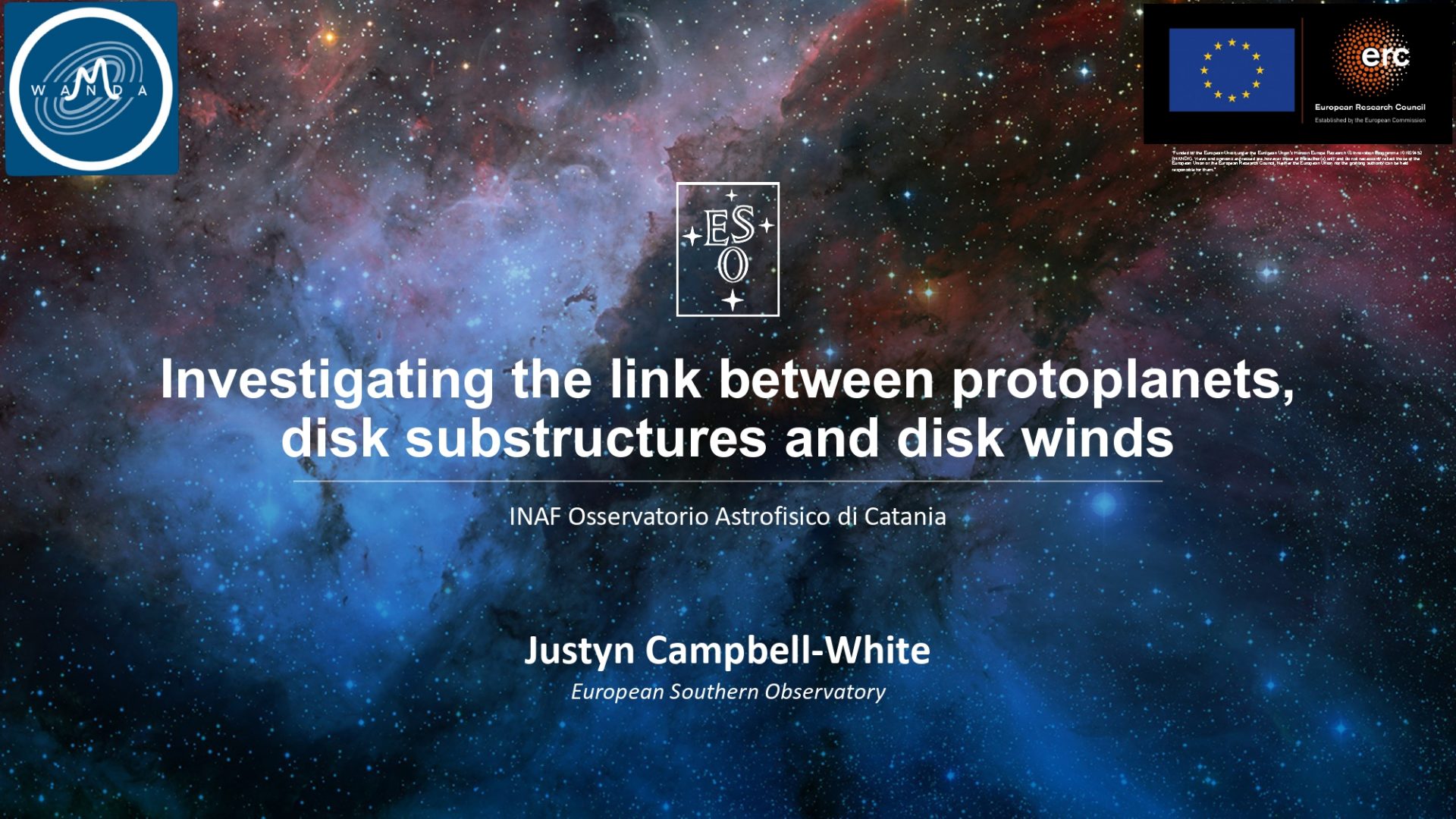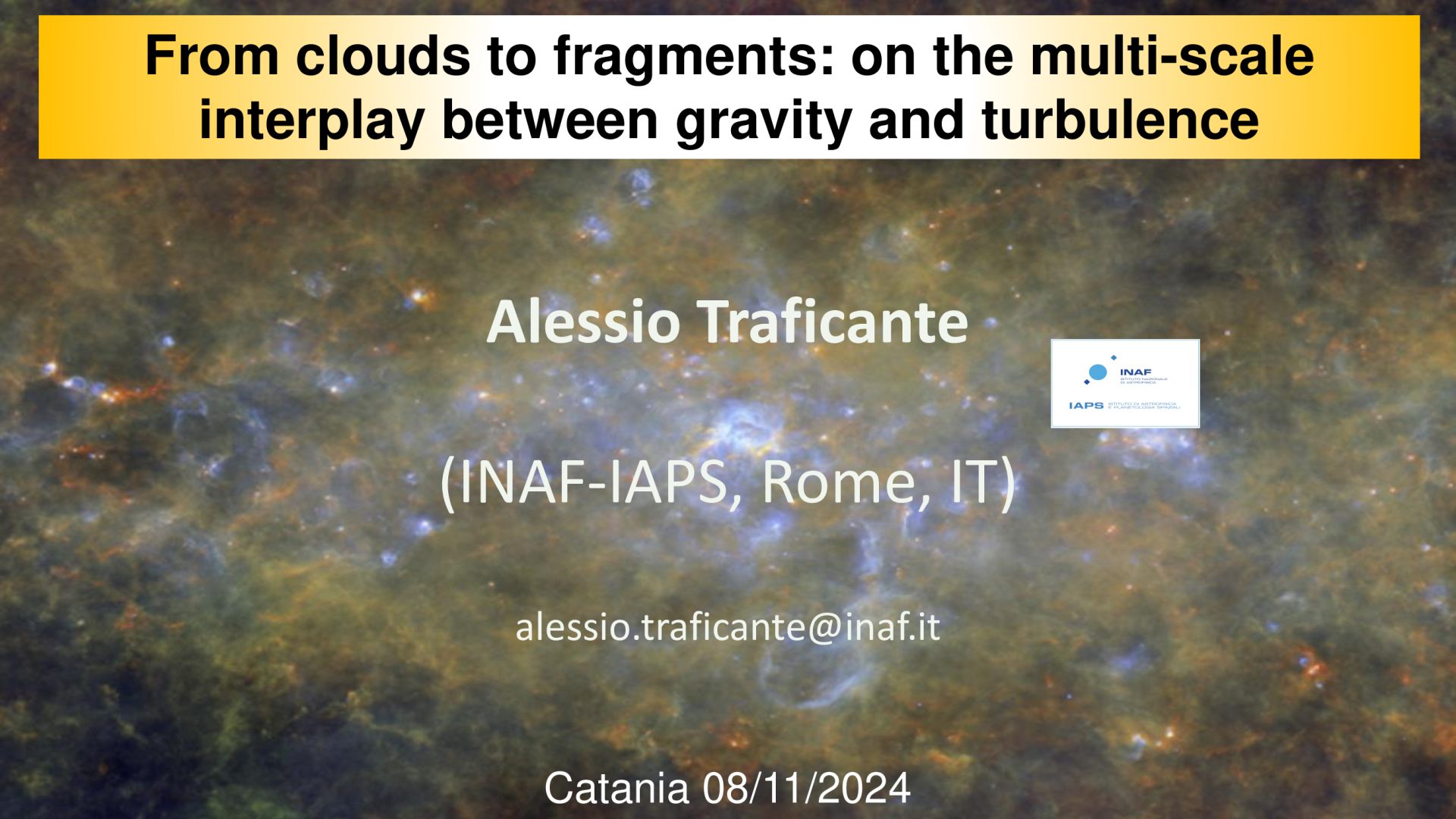The star formation mechanism occurs in well defined structures that can be identified and studied in great details in our own Galaxy: the process starts in giant molecular clouds, objects extended up to several tens of parsecs, within which elongated sub-structures, called filaments, may form. Inside filaments, round-like condensations extended up to ~1pc in radius, the so-called clumps, are the natural birth site of the pre- and proto- stellar fragments, inside which will origin the future stars.
There are still many open questions in this hierarchical view of the star formation process: are these structures relatively confined from each other, or is the large-scale environment affecting the dynamics of the formation down to clumps and fragments? Is there a continuous interplay of the various forces involved in the process, namely turbulence, gravity (and magnetic fields), at all scales? Or is there a relevant scale at which gravity will start to dominate the collapse, with critical implications on the star-formation mechanism?
After a general overview of the problem, I will present in details some recent results focused on the interplay between gravity and turbulence at the filament, clump and fragment scales. To investigate this interplay at the larger scales, we have combined the dynamics of so-called 70 micron quiet clumps, i.e. very pristine regions not yet strongly affected by feedbacks, with the dynamics of the parent filaments in which they are embedded. At smaller scales, I will discuss the different scenarios of fragments formation in light of the most recent results from the SQUALO (Star formation in QUiescent And Luminous Objects) project. This ALMA survey has been designed to investigate the formation properties in a sample of massive clumps selected to be at various evolutionary stages and with the common feature that they are all accreting at the clump scales.
Our results show that a large scales we observe a continuous interplay between turbulence and gravity, where the former creates structures at all scales and the latter takes the lead above a critical value of the surface density is reached, ~ 0.1 g cm^-2. At the same time, the fragmentation properties show several indications that the fragment are "clump-fed", i.e. the process is dynamical and the gravity dominates the collapse inside our massive clumps.



